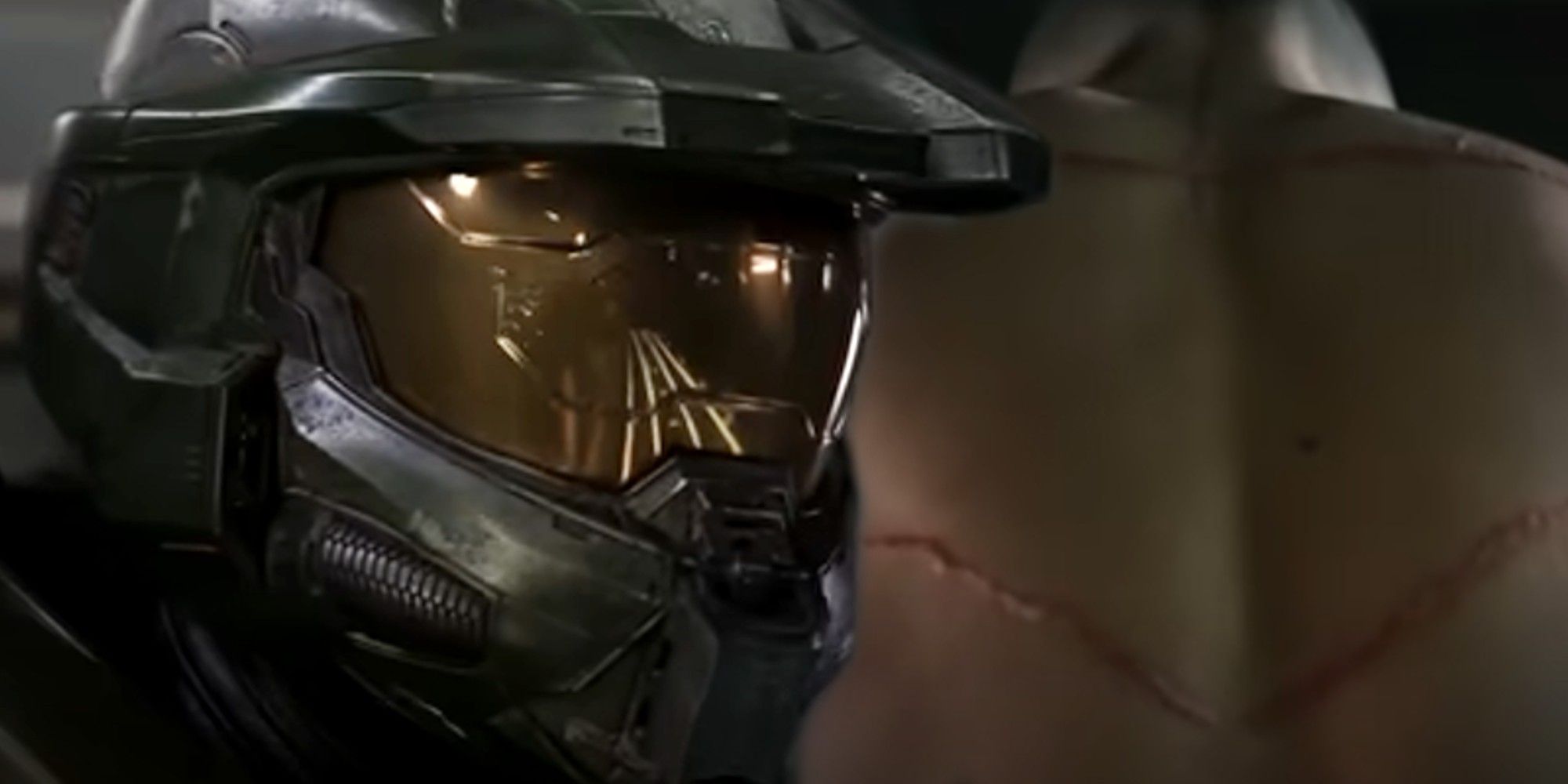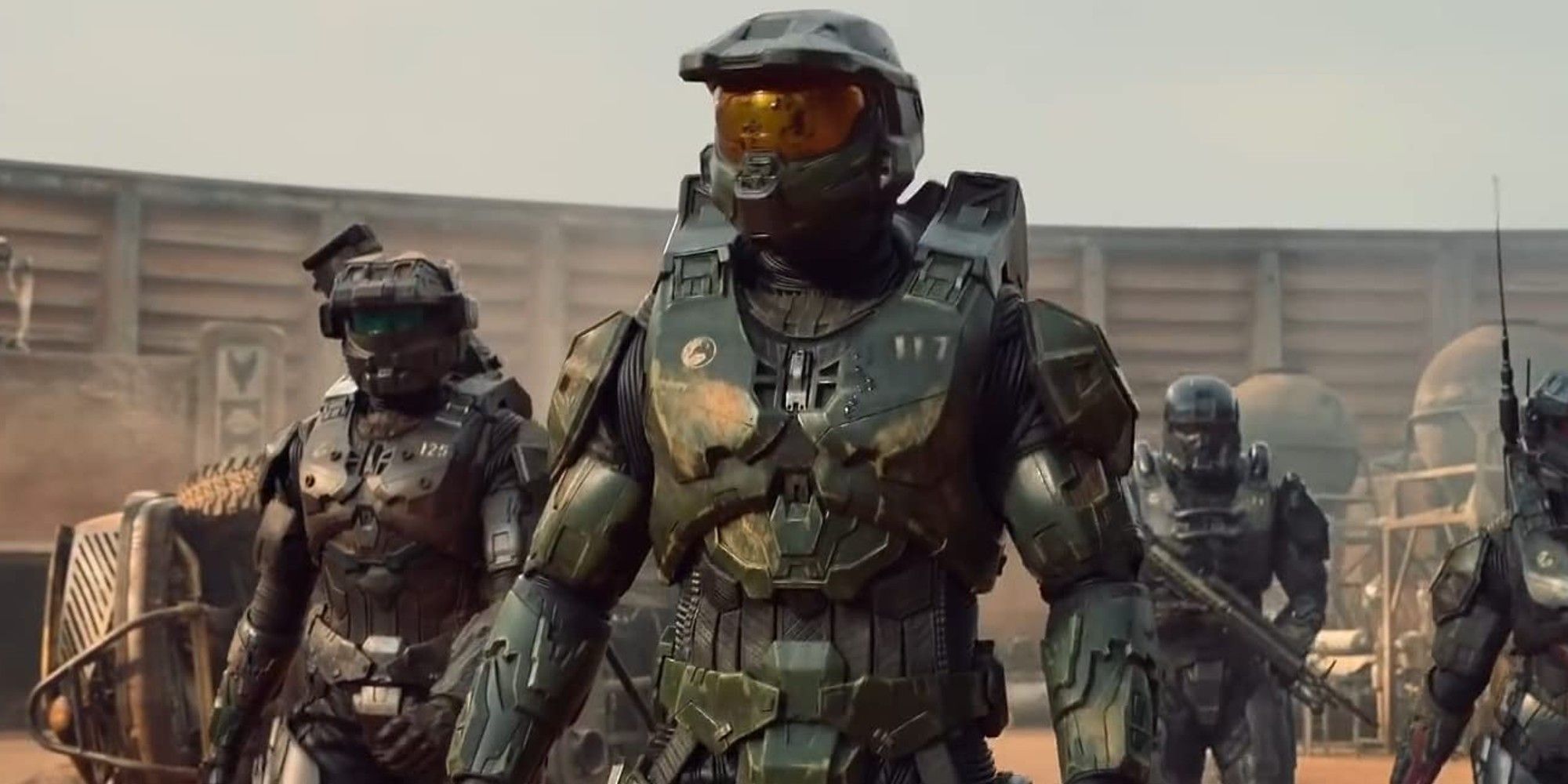343 Industries executive producer, Kiki Wolfkill, has explained the decision behind showing the Master Chief's face in Paramount+'s Halo TV series. The iconic video game super-soldier will be portrayed by Pablo Schreiber in the upcoming TV series. Halo is inspired by Microsoft's long-running video game franchise.
Taking place in the 22nd Century, Halo follows a legendary super-soldier named John-117 (Schreiber), the Master Chief, as he faces down a powerful alien threat in a galaxy littered with ancient mysteries from the past. A stoic soldier due to his intensive training and augmentation from a young age, the Master Chief is a silent protagonist who has never been unmasked properly on screen. While some criticize this decision for narrative reasons, others enjoy how having a faceless man of few words as the hero has allowed generations of fans to fully inhabit the character. However, in Paramount+'s adaptation of the Halo series, it was confirmed the Master Chief will remove his helmet, which could possibly be a point of contention for many fans. Ahead of the series airing, one of 343 Industries' producers has explained the motivations behind the controversial choice.
Posted to Halo Waypoint, the latest "Silver Debrief" blog post featured a statement by 343 Industries' Studio Head of Transmedia, Wolfkill, where she discussed why the series was showing Master Chief's face, stating that the decision had not been made lightly, and that a goal of the show had been to differentiate its story from the games. While the crew respected players' perspectives of the Master Chief, Wolfkill stated that for the show, 343 Industries wanted to provide fans with an external, subjective viewpoint on the Master Chief's story. While it may be disruptive for some fans, Wolfkill wanted to explore the character's human side for a new audience, praising Schreiber's performance. Check out Wolfkill's statement below:
"I'll start by saying that the decision to remove Chief's helmet was not a decision made lightly, nor was it a foregone conclusion when we set out to make the show. That said, it was always a goal of the show to deliver a differentiated experience from the games, not a carbon copy.
In our games, you as the player inhabit the armor – that experience makes both the mystery and the understanding of who the Master Chief is very personal and sacred. I have so much respect for the fact that the Chief exists in all of our heads, a character largely defined by our own interactive experiences. With the television series, we want to take you on John's journey and let you experience, as a viewer, his story and evolution from an external, subjective viewpoint; for that, it felt important to see John outside of his armor. We have done this in the past in books and some of our extended storytelling, but this is by far the most visually rich example.
For some, the shift in perspective on Master Chief/John may feel disruptive, some may want their experience of Master Chief to be singularly in the first person and that's okay – that diversity and unique personal perspective is what makes our community so awesome. For us and the show, it felt critical to explore the human within the armor and present a deep set of character stories that gives the audience a different way to experience the Halo universe.
I would be remiss if I didn't comment on the talent and commitment of Pablo Schreiber in bringing this version of the Master Chief to life. There is no end to the respect with which he treated this role and inhabited the suit; we had a lot of conversations around what it meant for John to remove his helmet and it was a responsibility Pablo felt every bit as deeply as we do."
Fans had previously taken issue with Cortana's design, taking it upon themselves to create their ideal representation of the character after her appearance in the first full trailer. A mainstay of the franchise and a beloved character, the UNSC Smart AI Cortana is the Master Chief's closest companion throughout most of the series, with original voice actress Jen Taylor reprising her role for the TV show. Despite being glad such a pivotal character in the franchise was confirmed for the series, some fans weren't pleased with Cortana's design, which opted to give her a more human look rather than her predominantly blue appearance seen throughout most of her appearances.
While Halo will have its own separate timeline that differs from the game's continuity, many fans are still concerned about whether it will fit their vision of the universe. While longtime fans may prefer the more silent protagonist that's easier to picture oneself as in the game, Wolfkill is correct when explaining why the series would have to show the character's face. Not only is Halo tasked with exploring the character in a central role in a different medium, but it also has to introduce itself to audiences who may not be as familiar with the video game series. While it may differ from how the games have portrayed the Master Chief, it can offer new opportunities to give the character greater depth than other entries in the franchise.
Source: Halo Waypoint


